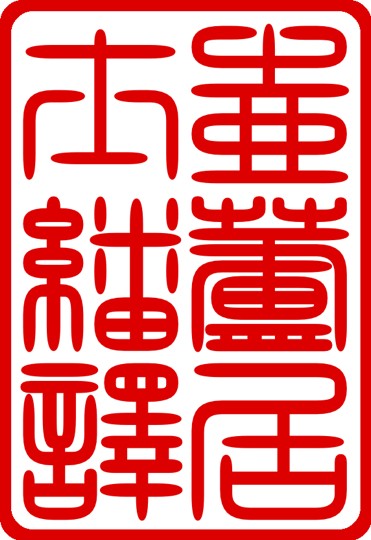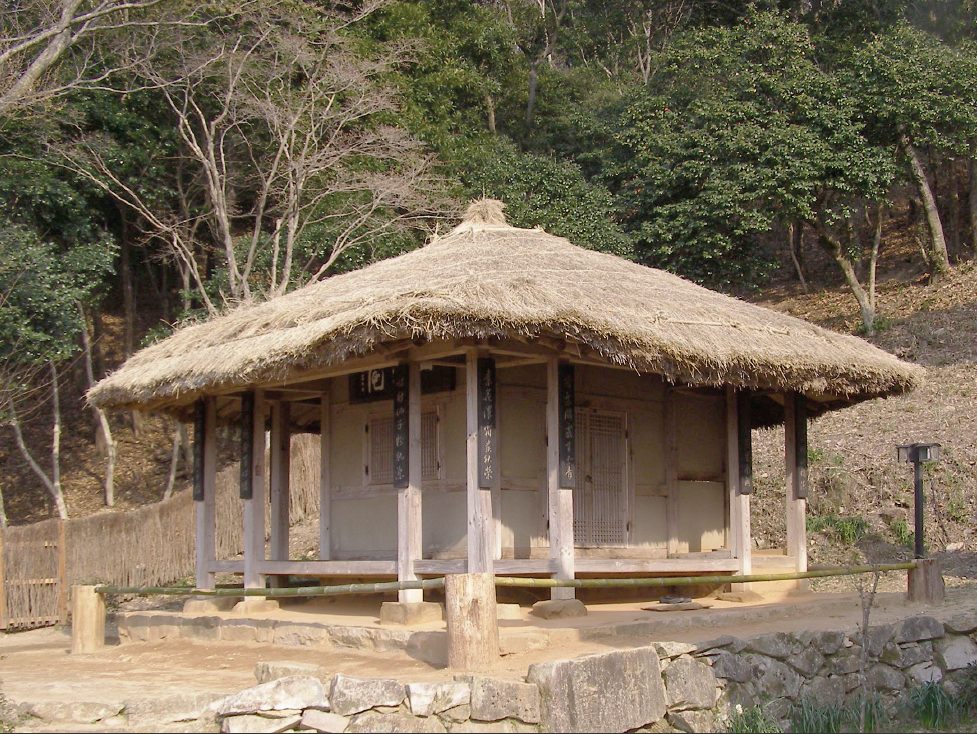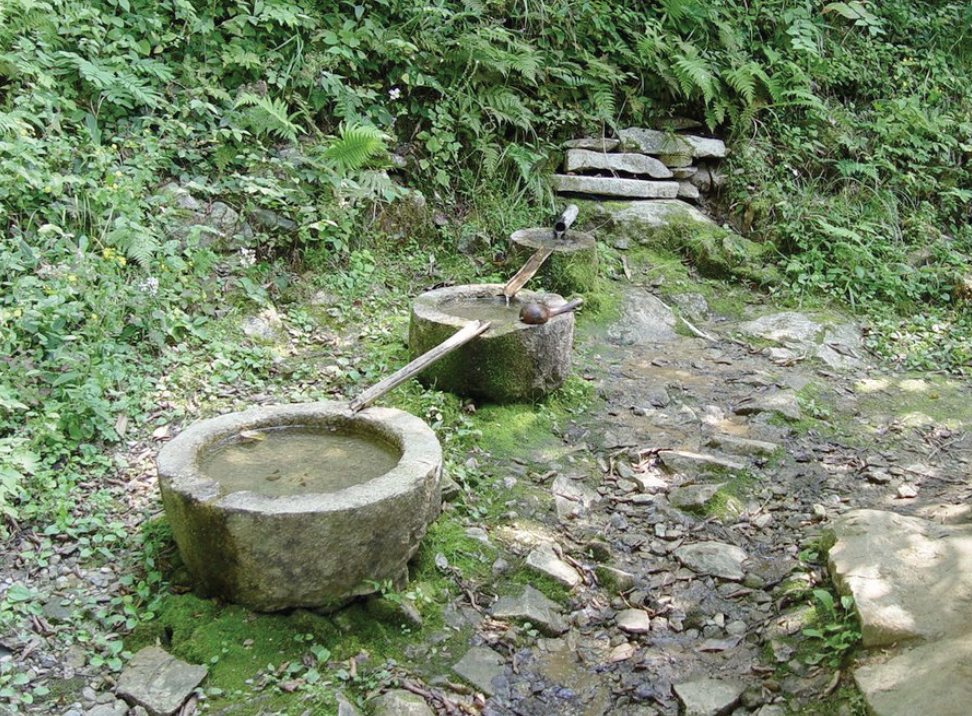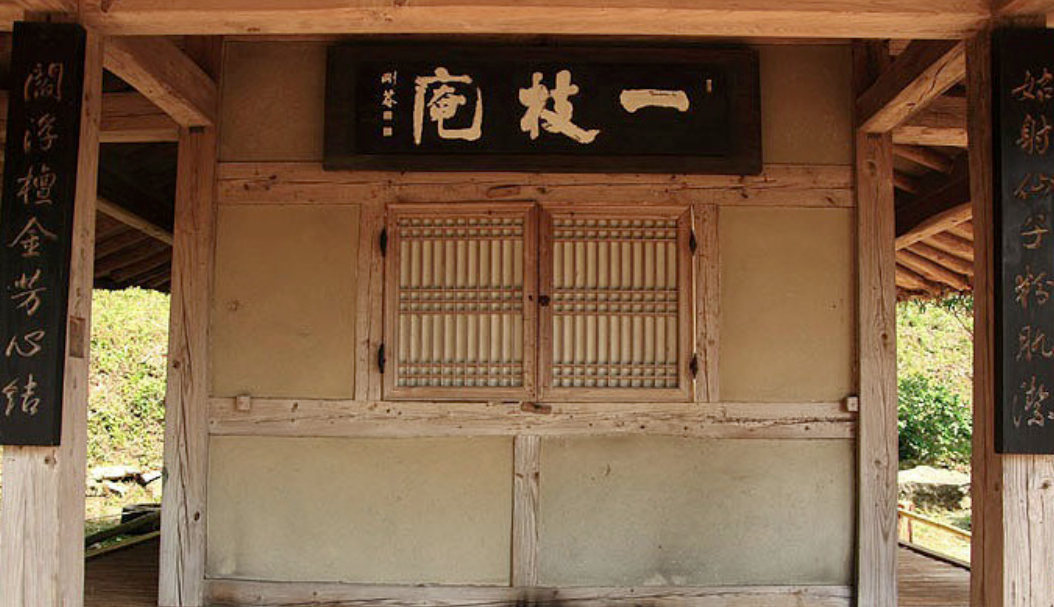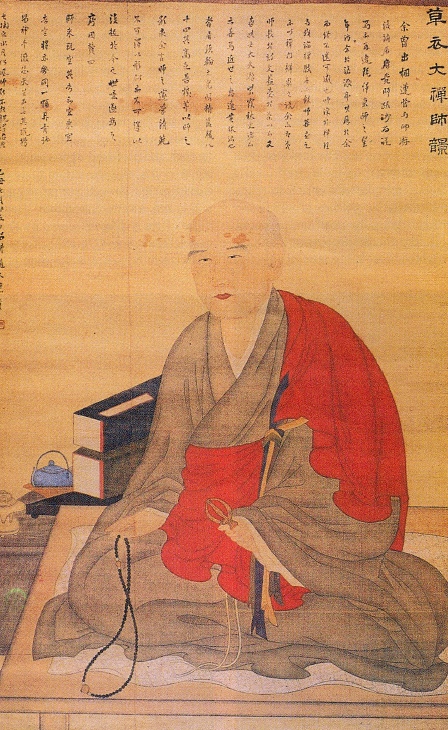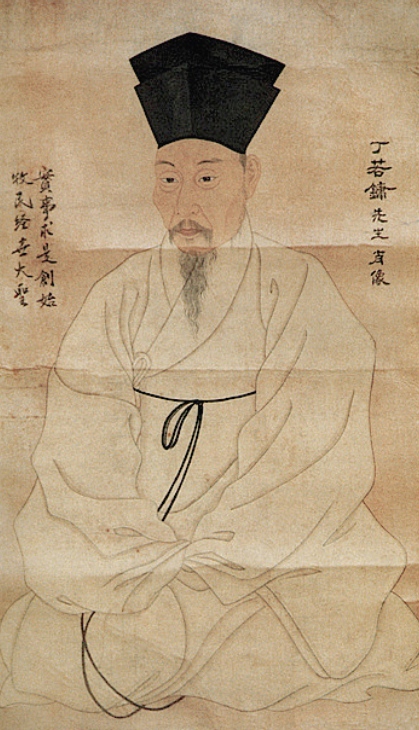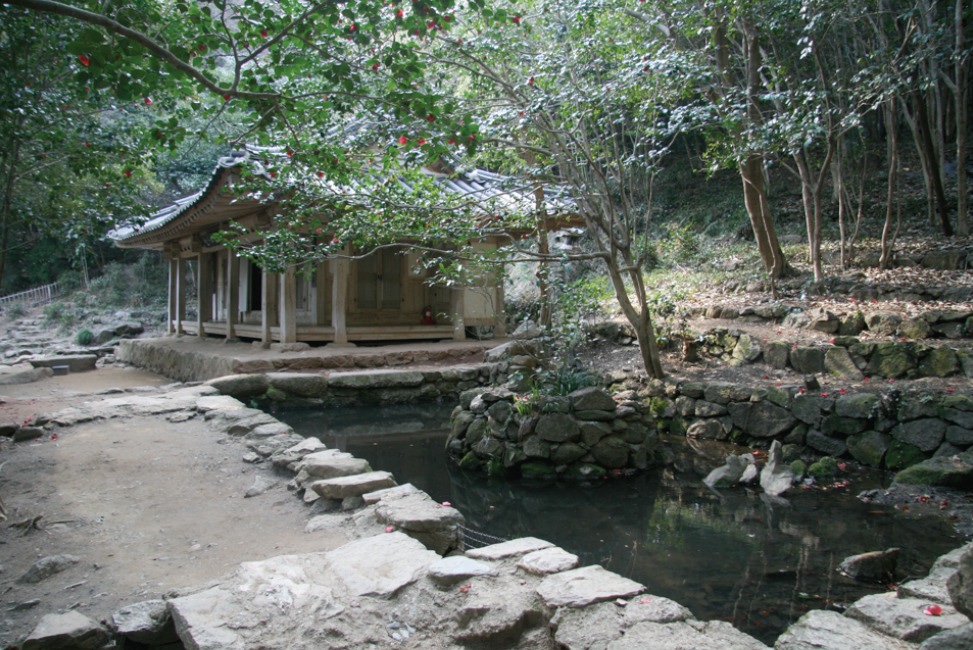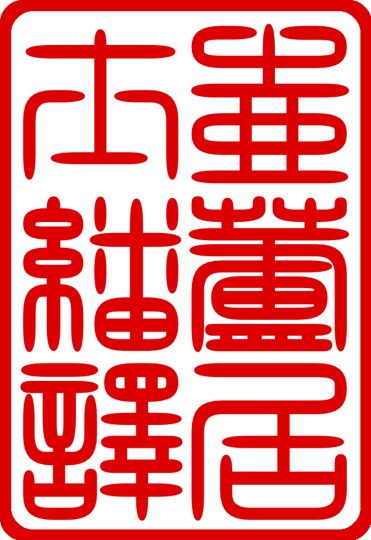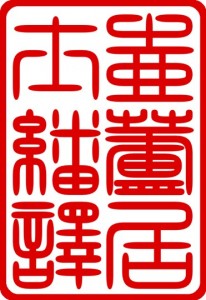Hermitage of the Single Branch
Hermitage of the Single Branch
Dedicated to Brother Anthony of Taizé and Master Hong Keong-hee in great appreciation for their gift of Tea Koreana
In 1823, the Venerable Cho-ui went into seclusion on the slopes of Mount Duryun where he followed the ancient tradition of eremitism, the shutting away of the world to cultivate the self through scholarship and contemplation. For the next forty-three years, Cho-ui took solitary refuge in a place spare and small, built on an earthen platform, in a quiet clearing near dense woods. The dwelling was a rough affair of wooden beams and square posts set on stones coarsely dressed, and of mud plastered walls encircled by a narrow porch, all covered by grass thatch.
He piped clear water through bamboo laid atop stone basins from a trickling spring to feed a pair of small garden ponds and to use for brewing tea. Built and rebuilt as needed, plain and unpainted, the humble abode had several names over the years, including Grass Hermitage, Hermitage of the Way, and Taro Place. Then in 1830, Cho-ui christened the hut Ilji-am 一枝庵, Hermitage of the Single Branch.
The expression “one branch, ilji 一枝” was an ancient literary locution laced with Daoist meaning. Of particular interest to Cho-ui was its allusion to hermitry, the solitary life of the recluse. The idiom appeared around the fourth century B.C., in Free and Easy Wandering, the first part of the Zhuangzi 莊子 written by Master Zhuang Zhou, a follower of the Daoist philosopher Laozi. Master Zhuang recounted an anecdote in which the sage emperor Yao wished to relinquish the throne and its troubles to one Xü You who replied,
“The wren nests in the deep forest on nothing more than a single branch.
The mole drinks from the river taking nothing more than a bellyful.
Return and repair, My Lord. I have no use for the rule of the world!”1
鷦鷯巢於深林不過一枝
偃鼠飲河不過滿腹
歸休乎君予無所用天下為
Refusing the proffered wealth and power of the sovereign, the wise man was content with mere shelter and sustenance. Advising the weary emperor to return to the seat of state and recover equilibrium, the knowing man shunned mundane affairs to further embrace a carefree life.
Later generations looked to the Zhuangzi when remarking on eremitism, and the common wren came to epitomize the blithe yet enlightened existence of the hermit. By the third century A.D., the bird was eulogized by the Jin poet Zhang Hua in the Jiaoliao fu 鷦鷯賦, Ode to the Wren:
翳薈蒙籠 “Obscured in lush and luxuriant thickets,
是焉游集 Right where it plays and gathers.
飛不飄颺 Flying, it does not float.
翔不翕習 Aloft, it is not hurried.
其居易容 Its dwelling easily holds it.
其求易給 Its wants, easily met.
巢林不過一枝 Nesting in the woods, it needs but one branch.
每食不過數粒 Feeding, it takes but a few grains.
棲無所滯 Perching, it does not linger.
游無所盤 Roaming, it does not circle about.
匪陋荊棘 It slights not brambles nor thorns,
匪榮茞蘭 It favors not angelica nor orchids.
動翼而逸 Moving its wings with easy leisure,
投足而安 Skittering about contented;
委命順理 Yielding to fate, it accords with natural patterns
與物無患 Without contending with things.
伊茲禽之無知 For all this bird’s lack of reason,
何處身之似智 Where does it possess such wisdom?
不懷寶以賈害 Disdaining treasure, it avoids buying trouble.
不飾表以招累 Without adornment, it attracts no bother.
靜守約而不矜 Resting, it is simple and frugal, without conceit.
動因循以簡易 Moving, it conforms to the Way, attaining artless ease.
任自然以爲資 Relying on Nature for its means,
無誘慕於世偽 It is not lured by the deceit of the world.”2
Similar sentiment characterized the poetry of reclusion by the Jin contemporary Zuo Si who in the Yongshi bashou 詠史八首, Eight Poems on History, equated the austerity and thrift of the wren with the lofty virtues of the perspicacious man.
俛仰生榮華 “Aspiring to glory and splendor,
咄嗟復彫枯 Tsk, is just carving rotten wood.
飲河期滿腹 Drinking from the river fills the belly,
貴足不願餘 But one can drink only so much.
巢林棲一枝 A forest nest need perch but on a single branch:
可為達士模 Such is the way of the sage.”3
In the ninth century, the hermit poet Hanshan admonished the wavering spirit once tempted by title and office to indulge instead in lofty pursuits, to seek the ready comforts of family, and to be in concert with the rhythms of nature. And then in a harmonious blend of Daoism and Zen, the nested wren became the focal point of meditation:
琴書須自隨 “With zither and book always at hand,
祿位用何為 What use are wealth and rank?
投輦從賢婦 Refuse the imperial carriage, heed the virtuous wife;
巾車有孝兒 A filial son commands the curtained cart.
風吹曝麥地 The wind blows, drying the wheat field;
水溢沃魚池 The water flows, filling the fish pond.
常念鷦鷯鳥 Contemplate the wren bird
安身在一枝 Content on a single branch.”4
Drawn from the long literary use of the wren and its one branch as metaphysical and poetic images, the name Ilji-am 一枝庵 perfectly conveyed Cho-ui’s profound devotion to a life of meditation, simplicity and frugality, a life contained within the four walls of the thatched hut, itself a paradigm of purging the superfluous and hewing to nothing but essentials.
Hermitage of the Single Branch resolved any doubts among his friends that Cho-ui meant to absent himself from them for periods of time. Not that he was without company, for he received students and visitors now and again, though the hermitage had only the barest amenities apart from the hermit’s warm welcome, teachings, and tea. And while usually ensconced within the confines of his modest home, Cho-ui often roamed the countryside and travelled far afield to visit places and friends. Yet, no matter how long he had gone and how dear his reunions, he always returned home to the hut and the eremitic principles for which it stood, ideals that still resonate deep within the eternal hermit heart.
Tea and the Venerable Cho-ui
Cho-ui Uisun5 was a revered Seon Buddhist priest whose knowledge, intellect, and interests distinguished him from other clerics of his generation. He was born in South Jeolla province and lived in Haenam; at fifteen, he became a monk. In addition to Korean, he studied Sanskrit and Chinese to further his understanding of scripture and classical literature as well as the arts. He possessed an aesthetic temperament, mastering tea, music, dance, calligraphy, painting, architecture, and garden design to express an exceptionally vibrant and creative spirit. Moreover, he had a deeply academic bent, writing treatises and verse, seeking out erudite monks and scholars for their learning and companionship, and practicing literati ways, especially tea.
In Cho-ui’s day, tea as regular ceremony and ritual had long been abandoned by temple and monastery, and even at court and palace, tea as rite, courtesy, and beverage dwindled to nothing among the aristocracy and officialdom, then it disappeared altogether from amid the literati and populace at large. For many years, tea survived in various forms and degrees of sophistication amongst a few dedicated monks and learned scholars.
In 1809, at the age of twenty-three, Cho-ui sought out Jeong Yak-yong6 to learn the Book of Changes, Daoism, and Chinese classical poetry. Just the year before, Jeong Yak-yong had moved during his exile from the capital into a place overlooking Gangjin Bay, a quiet house surrounded by tall bamboo and red camellia and by tea shrubs. Feral and wild, the tea grew partly shaded under the open canopy of trees and bamboo on the nearby slopes known locally as Dasan, Tea Mountain. Taking the name from the hills about, Jeong Yak-yong came to be known by the sobriquet Dasan, and his original thatched house was called Chodang, Grass Hall.
Jeong Yak-yong accepted Cho-ui as his student, and the young priest spent several months learning from the older scholar. In addition to daily lessons, the two shared their leisure time together, taking wandering walks to enjoy the scenic views, engaging in the literary form of pure conversation, composing poetry, and drinking tea. Profoundly imbued with these literati practices, Cho-ui observed them for the rest of his life.
As a Seon Buddhist, Cho-ui knew of tea as a medicinal herb used as a meditational aid prepared by monks who he noted “often picked tea late, old leaves and dried them in the sun. Using firewood, they cooked them over a brazier, like boiling vegetable soup. The brew was strong and turbid, reddish in color, the taste extremely bitter and astringent.”7 Under the tutelage of Jeong Yak-yong, Cho-ui learned tea as art, a high aesthetic pursuit and a refined culinary experience.
Later in life, Cho-ui wrote two important works to recover tea for Korean culture. In 1830, he produced the Chasin-jeon 茶神傳, Chronicle of the Spirit of Tea, a guide to the art of tea based on Ming Chinese practices for steeping the leaf. Seven years hence in 1837, he composed the Dongcha-song 東茶頌, Hymn in Praise of Eastern Tea. Then in 1850, Cho-ui sent tea and a revealing poem to a friend:
從來未能洗茶愛 “The desire for tea never washed entirely away;
持歸東土笑目隘 Restoring it to the Eastern Land, I smile and muddle on.
錦纒玉壜解斜封 Unraveling the knots to bare the brocades in the jade jar,
先向知已修檀稅 First to cherished friends do I offer the gift of tea.”8
Despite their disarray, Cho-ui revived the surviving remnants of tea culture, studying the various methods and teas, the assorted “brocades” secreted in the precious “jade jar” of history and literature. Until the end of his days, Cho-ui practiced tea, renewing and personally spreading the long lost custom among the literati and monasteries, profoundly influencing the Korean art of tea for generations thereafter.
Selected Sources
Brother Anthony of Taizé, Hong Kyeong-Hee, and Steven D. Owyoung, translators, Korean Tea Classics by Hanjae Yi Mok and the Venerable Cho-ui (Seoul: Seoul Selection, 2010), pp. 59-65.
Brother Anthony of Taizé and Hong Kyeong-Hee, The Korean Way of Tea (Seoul: Seoul Selection, 2007).
Brother Anthony of Taizé, “Tea in the Early and Later Joseon,” Transactions of the Royal Asiatic Society, Korea Branch (Seoul: Royal Asiatic Society, Korea Branch, 2011), vol. 86, pp., 119-141, esp. 139.
Young Ho Lee, Ch’oŭi Ŭisun: A Liberal Sŏn Master and an Engaged Artist in Late Chŏson Korea, Fremont: Jain Publishing Company, 2002.
Figures
1.
Ilji-am, Hermitage of the Single Branch
Area approximately 213.5 square feet
Daeheung Temple, Mount Duryun
Haenam, South Jeolla province
South Korea
2.
Ilji-am 一枝庵, literally “single branch hermitage”
Calligraphy
Paint on wood plaque under the eaves of
Ilji-am, Hermitage of the Single Branch
Daeheung Temple, Mount Duryun
Haenam, South Jeolla province
South Korea
3.
Artist unknown
Portrait of the Venerable Cho-ui, circa 1866 A.D.
Hanging scroll: ink and color on silk
AmorePacific Museum of Fine Arts
Yongin, Gyeonggi province
South Korea
4.
Artist unknown to author
Portrait of Jeong Yak-yong
Hanging scroll: ink and color on paper
Collection unknown to author
5.
Dasan Chodang, Grass Hall of Master Tea Mountain
Gyul-dong, Mandeok-ri, Doam-myeon
Gangjin, South Jeolla province
South Korea
Notes
1 Exerpted from Zhuang Zhou 莊周 (traditional dates 369-286 B.C.), “Xiaoyao you 逍遙遊 (Free and Easy Wandering),” Zhuangzi 莊子 (Master Zhuang), part 1.4. Cf. Burton Watson, trans., Chuang Tzu: Basic Writings (New York: Columbia University Press, 1964), pp. 26-27.
4 Exerpted from Hanshan 寒山 (flourish ninth century A.D.), Hanshan zi ji 寒山子集 (Collected Works of Master Hanshan). Cf. Red Pine (a.k.a. Bill Porter), The Collected Songs of Cold Mountain (Port Townsend: Cooper Canyon Press, 2000), pp. 42-43 and Robert G. Henricks, ed. The Poetry of Han-shan: A Complete, Annotated Translation of Cold Mountain (Albany: State University of New York Press, 1990), p. 36, no. 5.
5 Cho-ui Uisun 艸衣意恂 (variously 意洵, 1786-1866 A.D.).
6 Jeong Yak-yong 丁若鏞 (a.k.a. Dasan 茶山, 1763-1836 A.D.).
7 Brother Anthony of Taizé, “Tea in the Early and Later Joseon,” Transactions of the Royal Asiatic Society, Korea Branch (Seoul: Royal Asiatic Society, Korea Branch, 2011), vol. 86, pp., 138-139.
8 The last lines of a poem by Cho-ui that was “written in rhyme to the poem Sancheon the Daoist wrote thanking me for tea.” Sancheon was Kim Myeong-hui 金命喜 (a.k.a. Sancheon doin 山泉道人, 1788–1857), a high official and calligrapher as well as the younger brother of the noted calligrapher and distinguished official Kim Jeong-hui 金正喜 (a.k.a. Chusa 秋史, 1786-1856 A.D.). Cf. a translation of the whole poem in Young Ho Lee, Ch’oŭi Ŭisun: A Liberal Sŏn Master and an Engaged Artist in Late Chŏson Korea, Fremont: Jain Publishing Company, 2002), pp. 293-294.
The Autobiography of Imperial Instructor Lu
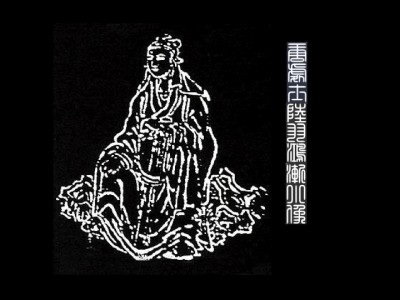
The Autobiography of Imperial Instructor Lu
The given name of Master Lu is Yü and his courtesy name is Hongjian. It is not known where he is from. Some say that his courtesy name is Yü and that his given name is Hongjian, not knowing which is right.1 He is as ugly as Zhongxüan and Mengyang and stutters like Xiangru and Ziyün,2 but he is talented and persuasive and sincere in character. In temperament, he is biased and irascible and often subjective. When his friends admonish him, however, he is at once liberal and respectful. Whenever he is at a gathering and happens to think of something, he leaves without speaking, causing people to wonder if he is scornful. But when he makes a promise to someone, he keeps his word, even though the path is a thousand li3 in length, filled with ice and snow, and infested with tigers and wolves.
At the beginning of the Shangyüan reign period,4 Lu Yü built a hut on the banks of Tiaoxi Stream.5 Closing his door, he now reads books for pleasure. He does not mix with riffraff, but spends long days talking and gathering with eminent monks and lofty scholars. It is his habit to roam about in his skiff to mountain temples, wearing only a gauze kerchief, plaited sandals, a short shirt and briefs, and loincloth. He often walks alone in the wilds chanting Buddhist scripture and reciting ancient poetry. Knocking about the trees with his staff and dabbling his hand in flowing water, he aimlessly wanders from dawn to dusk until the day is utterly dark, wailing and weeping, then finally returning home. Thus, people of Chu6 say among themselves, “Master Lu is now today’s Jieyü.7
Beginning at the age of two,8 desolate and exposed,9Lu Yü was raised at the Zen Buddhist Monastery10 of the great teacher Priest Jigong11 in Jingling. From the age of eight, he learned composition, and Jigong revealed to him through the scriptures the Buddhist calling of renouncing the world. In response, the boy said, “Without brothers, to have no descendants, to don monks’ robes and be tonsured, to call oneself a Buddhist – if the Confucians were to hear this, would they praise it as filial piety? May Yü be taught the writings of the sage Confucius?”12
Jigong replied, “Virtuous, indeed! You are filial, but you really do not yet know the Way of the tonsure and the robes of the West.13 Its name is truly great!” Jigong insisted on teaching the Buddhist scriptures without submitting to the will of the boy. The boy insisted on learning the Confucian canon without submitting to the will of the teacher. Then, Jigong feigned disaffection for the boy and assigned him a sequence of demeaning tasks to test him: sweep the temple grounds, clean the monks’ privy, mix mud with his feet and plaster the walls, carry tiles on his back and build rooms, and tend thirty head of cattle.
In Jingling and Xihu,14 there was no paper for the boy on which to write and learn calligraphy. So, using a bamboo stick, Lu Yü traced characters on the backs of the cattle. One day, he questioned a scholar about calligraphic characters and was given a scroll of the poem “Ode on the Southern Capital” by Zhang Heng.15 Not knowing the characters in the poem, he sat alone in the pasture, imitating the dark robed student boys, sitting up straight, the scroll unrolled, just silently moving his mouth.
When Jigong learned of this, he feared the boy was being imbued with heretical teachings, departing from the Way, ever distant with every day. So, the boy was again confined to the temple grounds and ordered to cut brambles and weeds under the direction of the senior disciple. Occasionally, written characters would come to mind and he would fall into a stupor as if lost and disheartened, standing like a wooden post, passing the day unmoving. The disciple thought he was lazy and whipped him. And so, the boy cried without restraint, lamenting, “Alas, the months and years are passing by and I fear I will never know writing and books!” The disciple thought the boy harbored resentment and again whipped his back, breaking the cane before releasing him.
Weary of these chores, the boy escaped from the senior disciple and ran away. With just a roll of clothes, he joined an itinerant troupe of actors for which he wrote the play Mocking Banter in three acts and played the leading roles of the blockhead, the phony civil servant, and the character who conceals the pearl. Priest Jigong pursued the boy and caught up with him, saying, “When I think of you lost to the Way! Alas, what a pity! Our founding master16 said that of the twelve hours of a disciple’s time, period was allowed for the study of non Buddhist teachings in order to subdue heretical thoughts. Because our monastery has so many people, you may now follow your desire. You can throw away all those song and dance books!”
During the Tianbao reign period,17 people of the ancient capital of Ying18 held a banquet at Canglang19 to which the district official invited Lu Yü to be master of ceremonies.20 At the time, Master Li Qiwu,21 of Honan, who was demoted and serving as governor of Jingling, perceived Lu Yü’s extraordinary talent. Taking Lu Yü’s hand and patting his back, Li then personally presented a collection of poetry to him. Thereafter, the Han and Mian region was transformed.22. Later, Lu Yü carried his books to Mount Huomen to study with Master Zou23 in the countryside. When Cui Guofu,[24] a director of the ministry of rites, assumed the office of prefect of Jingling, Lu Yü accompanied him here and there for all of three years. He gave Lu Yü a white donkey, a black humped ox,25 and a bookcase of pagoda wood with a beautiful grain. The white donkey and the humped ox were presents to Cui Guofu from Li Cheng,26 prefect of Xiangyang; the fine-grained case of pagoda wood27 was from the late vice-president Lu28 of the chancellery. Since Lu Yü had already admired these things, it was fitting that a rustic such as he ride and keep them. So, Cui Guofu especially gave them to him.
At the beginning of the Zhide reign period,29 the people of Qin30 crossed south over the Yangzi River, and Lu Yü also crossed31 and met the Buddhist monk Jiaoran32 of Wuxing:33 the commoner and the priest ignored their difference in age.34
Ever since he was young, Lu Yü had enjoyed writing, mostly satirical protests. Seeing people do good, he felt good. Seeing people doing evil, he felt shame. Bitter words grate on the ear. There was nothing and no one that he would not confront; things that an ordinary person would perforce shun. In response to the An Lushan35 rebellion, he wrote the poem “Four Lamentations.” In response to the revolt of Liu Zhan36 in the Jianghuai,37 he wrote the ode “The Obscuring of Heaven.” Both these events moved him to cry and weep. Other writings include The Bonds between Ruler and Subject in three volumes, Unraveling Origins in thirty volumes, Genealogy of Four Surnames South of the Yangzi River in eight volumes, A Record of Famous People from North and South in ten volumes, A Record of Successive Officials in Wuxing in three volumes, A Critical History of Huzhou Prefecture in one volume, The Book of Tea in three volumes, The Interpretation of Dreams, first, second, and third parts, in three volumes, all of which is kept in a coarse cloth sack.
Written in the autumn of 761, the xinchou year of the Shangyüan reign period at the age of twenty-eight.38
陸文學自傳
陸子名羽,字鴻漸,不知何許人也。或雲字羽名鴻漸,未知孰是?有仲宣孟陽之貌陋,相如子雲之口吃,而為人才辯篤信,褊躁多自用意,朋友規諫,豁然不惑。凡與人宴處,意有所適,不言而去,人或疑之,謂生多瞋。及與人為信,雖水雪千裏,虎狼當道,而不愆也。上元初,結廬於苕溪之濱,閉關對書,不雜非類,名僧高士,談宴永日。常扁舟往來山寺,隨身惟紗巾藤鞋短褐犢鼻,往往獨行野中。誦佛經,吟古詩,杖擊林木,手弄流水,夷猶徘徊,自曙達暮,至日黑興盡,號泣而歸。故楚人相謂,陸子蓋今之接輿也。始三歲惸露,育乎竟陵大師積公之禪院。自幼學屬文,積公示以佛書出世之業。子答曰:「終鮮兄弟,無複後嗣,染衣削發,號為釋氏,使儒者聞之,得稱為孝乎,羽將授孔聖之文可乎?」公曰:「善哉子為孝,殊不知西方染削之道,其名大矣。」公執釋典不屈,子執儒典不屈,公因矯憐無愛,曆試賤務。掃寺地,潔僧廁,踐泥汙牆,負瓦施屋,牧牛一百二十蹄。竟陵西湖無紙,學書以竹畫牛背為字,他日問字於學者,得張衡《南都賦》,不識其字,但於牧所仿青衿小兒,危坐展卷,口動而已。公知之,恐漸漬外典,去道日曠,又束於寺中,令其翦榛莽,以門人之伯主焉。或時心記文字,懵然若有所遺,灰心木立,過日不作,主者以為慵惰鞭之。因歎歲月往矣,恐不知其書,嗚咽不自勝。主者以為蓄怒,又鞭其背,折其楚乃釋。因倦所役,舍主者而去,卷衣詣伶黨,著《謔談》三篇。以身為伶正,弄木人假吏藏珠之戲。公追之曰:「念爾道喪,惜哉!吾本師有言,我弟子十二時中,許一時外學,令降伏外道也。以我門人眾多,今從爾所欲,可緝學工書。」天寶中,郢人酺於滄浪道,邑吏召子為伶正之師。時河南尹李公齊物出守見異,捉手拊背,親授詩集,於是漢沔之俗亦異焉。後負書於火門山鄒夫子別墅,屬禮部郎中崔公國輔出守竟陵郡,與之遊處凡三年,贈白驢烏、幫牛一頭,文槐書函一枚。白驢、幫牛襄陽太守李憕見遺,文槐函故盧黃門侍郎所與,此物皆已之所惜也。宜野人乘蓄,故特以相贈。洎至德初,秦人過江,子亦過江,與吳興釋皎然為緇素忘年之交。少好屬文,多所諷諭。見人為善,若已有之;見人不善,若已羞之。苦言逆耳,無所回避,由是俗人多忌之。自祿山亂中原,為《四悲詩》,劉展窺江淮,作《天之未明賦》,皆見感激當時,行哭涕泗。著 《君臣契》三卷,《源解》三十卷,《江表四姓譜》八卷,《南北人物誌》,十卷,《吳興曆官記》三卷,《湖州刺史記》一卷,《茶經》三卷,《占》夢上中下三卷,並貯於褐布囊。上元辛醜歲,子陽秋二十有九。
Source
Lu Wenxüe zijuan 陸文學自傳 (The Autobiography of Imperial Instructor Lu, 761), Wenyüan yinghua 文苑英華 (Beautiful Blossoms from the Literary Garden, ca. 1009), Li Fang 李昉 (925-996) et al., comps., ch. 793.
Figure
Small Portrait of the Tang Eremite Lu Hongjian, Tang chushi Lu Hongjian xiaoxiang 唐處士陸鴻漸小像, ink rubbing of an engraved image on a stone stele originally installed in the Lugong ci 陸公祠 or Shrine of Master Lu. The shrine was once built in 1783 on the moat outside the north gate of the Jingling city walls. In 1988, the shrine was rebuilt on the site of the former West Pagoda Temple, Xita si 西塔寺.
Notes
1 This sentence is sometimes rendered as parenthetical and considered a later interpolation by scholars such as Zhang Hongyong 張宏庸, Lu Yü qüanji 陸羽全集 (Taibei: Chaxüe wenxüe chuban she, 1985), p. 88, n. 2.
2 Lu Yü compared his verbal and physical afflictions to those of four famous poets of the Han and Wei dynasties: Wang Can 王粲 (177-217), Zhang Zai 張載 (ca. 289), Sima Xiangru 司馬相如 (c. 179-117 B.C.E.), and Yang Xiung 揚雄 (53 B.C.E.-C.E. 18), respectively.
3 Li 里, a little over a third of a mile.
4 The Shangyüan 上元 reign period (760-761 C.E.) lasted a nominal two years; therefore, the year that Lu Yü established his residence was 760.
5 The Tiaoxi 苕溪 or Reed Stream is a major geographical and seasonal feature of Huzhou 湖州, the town in northern Zhejiang where Lu Yü eventually settled, lived, and died. The name Reed Stream comes from the marsh plant that grows abundantly along the river bank; it blossoms in white, feathery plumes in summer and in autumn goes to seed, showering the air and water with a snowy fluff. Broad and shallow, the river flows in two main branches, east and west, out of Mount Tianmu 天目山, converges in the town of Huzhou, and then empties north into Lake Tai 太湖.
6 Chu 楚 was a name for the ancient state and region of Hupei and Hunan where Lu Yü was born.
7 Jieyü 接輿 was an eccentric of the Spring and Autumn Period (772-481 B.C.E.) known as the Mad Man of Chu.
8 The text reads, “Beginning at sansui 三歲 (three years of age),” however, by Chinese custom, age begins at conception and a person is one year old at birth; therefore, Lu Yü was abandoned at the age of two, by Western count.
9 Lu Yü was a foundling discovered on the banks of a stream.
10 The Zen Buddhist Monastery was formally known as the Jingling Longgai si 竟陵龍盖寺, the Temple of the Hidden Dragon at Jingling. The monastery was originally built on Fufu Island 覆釜洲 in the middle of West Lake 西湖. Established as early as the late Han, the temple expanded greatly in the fourth century during the Eastern Jin. In the eighth century, the renown of the temple drew famous clerics and important convocations. Lu Yü was raised at the temple as a servant and novice. Presently known as the Xita si 西塔寺 or West Pagoda Temple, the monastery was rebuilt in 2003 just north of West Lake.
11 Abbot Zhiji 智積 (a.k.a. Jigong 積公; active 735-768).
12 At one time, a Buddhist novitiate severed relations with his family, took a vow of celibacy, and was divorced from mundane, secular concerns. In Confucian terms, becoming a monk was considered unfilial to his parents, an unnatural cessation of the family line, an unproductive member of society, and disloyal to the state.
13 The West refers to India, the birthplace of Buddhism, and also to the Indian monk Bodhidharma (ca. 460-532/534), the patriarch of Zen Buddhism, who traveled west from India to China in circa 520 to spread his teachings.
14 Jingling 竟陵 was the ancient name of present Tianmen 天門, a town just sixty-seven miles west of the city of Wuhan 武漢, Hubei province 湖北省. Jingling 竟陵 literally means “end of hills,” that is to say, a flat plain with no hills at all. The town is famously known as Lu Yü guli 陸羽故里or the birthplace of Lu Yü. Xihu 西湖 or West Lake is a great pond just outside the western gate of old Jingling and was so called because it mirrored East Lake, Donghu 東湖 across town. West Lake is presently a large water park with buildings commemorating the life and work of Lu Yü.
15 Zhang Heng 張衡 (78-139), a distinguished poet, astronomer, and mathematician of the Eastern Han period (25-220), whose Nandu fu 南都賦 (Ode on the Southern Capital) depicted the region, products, scenic and historic places, and social customs of the provincial capital of Nanyang, present day Honan.
16 Priest Jigong did not identify the founder of the Longgai Temple 龍蓋寺, but its most famous abbots were the Buddhist philosopher Zhidun 支遁 (314-366) and the Buddhist scholar Yanzong 彦琮 (557-610) both of whom presided over the monastery when it was one of the most important monastic establishments in China. Circa 353, Zhidun was recorded as having enclosed a freshwater spring on the temple grounds, a place that later became known as Spring of the Imperial Instructor, Wenxüe qüan 文學泉, because of its association with Lu Yü (Zhou Shiping 周世平 and Tong Zhengxiang 童正祥, “Lu Yü guzhu ‘Xita si yüanliu’ kao 陸羽故居 ‘西塔寺源流’ 考 (A Study of the Residency of Lu Yü and the ‘Origins of West Pagoda Temple’), Chayüan 茶苑 (Tea Garden Journal, 2003), no. 2, pp. 31-33).
17 Tianbao reign period, 742-755.
18 Ying 郢 was the capital of the ancient state of Chu 楚, now known as Jiangling 江陵 or Jingzhou 荆州, Hupei.
19 Canglang 滄浪 is a branch of the Han River 漢水 at its lower reaches near Jingzhou 荆州, Hupei.
20 Lu Yü was but thirteen years of age when he received the invitation to direct the entertainments for the festivities.
21 Li Qiwu 李齊物 (active ca. 742-755), a former governor of Loyang, a distinguished scholar, courtier, and respected high official in the Tang government who in his later years was Grand Mentor of the Heir Apparent, one of three preceptors to the crown prince. Li spent a number of years in exile as prefect of Jingling.
22 Han 漢 and Mian 沔 rivers, i.e., the people of the region. The Mian is a branch of the Han River.
23 Zou Kun 鄒坤 (active ca. 747), headmaster of the Confucian academy on Mount Huomen 火門山, northwest of Jingling 竟陵, Hupei. See Kou Dan 寇丹, Lu Yü yü Chajing yanjiu 陸羽與茶經研究 (Hong Kong: Tianma tushu, Ltd., 2002), p. 102, no. 18.
24 Cui Guofu 崔國輔 (js 726), a Tang poet, courtier, and official, who in 752 was appointed prefect of Jingling.
25 A zebu (Bos indicus), an Asian domestic ox with a large hump over its shoulders, short curved horns, a large dewlap, and pendulous ears.
26 Li Cheng 李憕 ( ? – 755), a high official promoted to the post of minister in the Ministry of Rites after the An Lushan rebellion of 755.
27 Pagoda wood (Sophora japonicus), also known as the scholar’s tree and traditionally cultivated as a garden plant by aspiring students.
28 The official Lu 盧 of the chancellery, unidentified.
29 Zhide reign period, 756-757.
30 Qinren 秦人: Refugees from the province of Shaanxi fleeing the conflict and rebellion in the north to the relative safety of the south below the Yangtze River.
31 In 756, Lu Yü traveled northeast to Wuxing 吳興, Zhejiang, a place south of the Yangzi River and therefore still considered “south.”
32 Jiaoran 皎然 (720-799), a Buddhist priest, literary critic, and noted poet whose radical “use of poetry as an intellectual instrument,” “juxtaposition of Zen Buddhism and the arts,” and theory made him the dominant literary figure of the lower Yangzi (William H. Nienhauser, Jr., ed. and comp., The Indiana Companion to Traditional Chinese Literature (Bloomington: Indian University Press, 1986), pp. 270-273).
33 Jiaoran was from the town of Huzhou 湖州 in Wuxing 吳興, Zhejiang, where Lu Yü eventually settled and spent the rest of his life.
34 Lu Yü (733-804) and Jiaoran (720-799) differed in age by about thirteen years. The year 720 is given as the date of Jiaoran’s birth; 799 as his date of death (Xü Hairong 徐海榮, ed., Zhongguo chashi dadian 中國茶事大典 (Beijing: Huaxia chuban she, 2000), p. 561 and William H. Nienhauser, Jr., ed. and comp., The Indiana Companion to Traditional Chinese Literature (Bloomington: Indian University Press, 1986), p. 270, respectively).
35 An Lushan 安祿山 (703-757) rebelled on the ninth day of the eleventh month of 755. Within months, refugees were fleeing the conflict from Shaanxi to the relative safety of the south.
36 Liu Zhan 劉展 ( ? – 761), a rebel in the lower Yangzi River valley, especially around Suzhou and the wealthy trading towns of Yangzhou and Chuzhou. Liu rebelled during the winter of 760-761 and was killed by government troops.
37 Jianghuai 江淮: Jiangsu, Honan, and northern Anhui provinces.
38 Lu Yü was twenty-nine sui 歲, Chinese years, making him age twenty-eight by Western reckoning.
Tianluoshan: Reprise
Tea in the Neolithic Era or Getting to the Root of the Matter
There is an ongoing discussion within the archaeological community regarding the discovery of Camellia plant remains at the late Stone Age site of Tianluoshan, particularly the notion that the tea plant Camellia sinensis was domesticated.
The discourse concerns the sufficiency and analysis of data. Unlike the announcements of the discovery of Neolithic tea, exchanges over issues regarding the find take place in less public forums. However, all agree that the archaeology is sound and the discovery of Camellia roots is not in dispute. Moreover, there is an accord that the Camellia rhizomes, like the other botanicals found at Tianluoshan, are an important discovery.
Several concerns remain among archaeologists. While accepting the excavation of Camellia roots from within the residential area of the settlement, some have reservations as to whether the rhizomes were planted, suggesting instead that the spacing of the plants as well as the surrounding light-colored earth were naturally formed along the expanding growth of the roots. And though Tianluoshan is five meters above sea level, some question the growth of Camellia near marshy ground. Without proof of planting, the Camellia may not have been under cultivation, and so the specific ethnobotanical connections between these plants and the settlement community remain archaeologically yet unclear.
Although there is agreement that the roots are genus Camellia, there is no consensus as to species. This particular issue hinges on the chemical analysis used to determine plant species. Some further cite the lack of wild Camellia sinensis with which to compare the excavated Camellia rhizomes. Issues aside, the general concession is that the Camellia plant remains at Tianluoshan are most likely Camellia sinensis, while others encourage further investigation and the gathering of more information.
As for the Camellia roots at Tianluoshan, it remains to be seen as to whether or not the archaeological community will clarify the situation and come to unanimity. One step towards solution, once proposed by the archaeobotanists, is testing the DNA of the specimens. In the meantime, there continues to exist a respectful debate.
Acknowledgements
Many thanks to Dr. Ling-yu Hung for her inquiry into the controversy over Neolithic tea. And thanks to Dr. Qin Ling, archaeobotanist at the School of Archaeology and Museology, Beijing University and Dr. John T. Kirby, Professor and Chair of the Department of Classics, University of Miami for their kind assistance.
Tianluoshan: Tea in the Neolithic Era
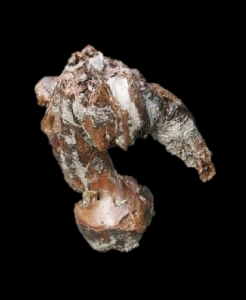 In 2001, the remains of a Neolithic settlement were discovered near the eastern coast of China where archaeologists excavated nearly a dozen roots of the tea plant Camellia sinensis. Each rhizome was found in an extraordinary state of preservation and in a regular pattern of planting. The remarkable find dramatically changed the history of tea by extending the geographical range of primordial Camellia sinensis from the remote fastness of Sichuan in the far west eastward to the marshes and streams of the lower Yangzi and the Zhejiang coast. Moreover, tea culture was no longer confined to the historical period but stretched thousands of years back in time to the fourth millennium B.C. of the late Stone Age. Continue Reading →
In 2001, the remains of a Neolithic settlement were discovered near the eastern coast of China where archaeologists excavated nearly a dozen roots of the tea plant Camellia sinensis. Each rhizome was found in an extraordinary state of preservation and in a regular pattern of planting. The remarkable find dramatically changed the history of tea by extending the geographical range of primordial Camellia sinensis from the remote fastness of Sichuan in the far west eastward to the marshes and streams of the lower Yangzi and the Zhejiang coast. Moreover, tea culture was no longer confined to the historical period but stretched thousands of years back in time to the fourth millennium B.C. of the late Stone Age. Continue Reading →
Spring of the Instructor: Wenxüe qüan 文學泉
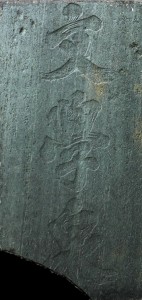 The Spring of the Instructor was once an important source of water in the ancient town of Jingling. Pure and clear, the spring was discovered long ago by a venerated monk, and for hundreds of years thereafter its waters were used to brew tea at the nearby monastery. As the basic medium for making tea, the spring’s sweet water was essential and preferred for its purity, clarity, and taste. According to tradition, the Tang tea master Lu Yü drew water from the spring as a boy. Many sources of fine water were credited to Lu Yü during his lifetime, but the spring at Jingling was plainly identified with his adolescence, giving it precedence above all others in the shaping of his taste and ideas on tea. Lu Yü later used the knowledge he gathered from his early time at the spring to write the Chajing 茶經, the Book of Tea. From the late Tang dynasty through the twentieth century until today, the site of the spring was ornamented with pavilions and halls to commemorate the Book and life of Lu Yü, the Sage of Tea. Continue Reading →
The Spring of the Instructor was once an important source of water in the ancient town of Jingling. Pure and clear, the spring was discovered long ago by a venerated monk, and for hundreds of years thereafter its waters were used to brew tea at the nearby monastery. As the basic medium for making tea, the spring’s sweet water was essential and preferred for its purity, clarity, and taste. According to tradition, the Tang tea master Lu Yü drew water from the spring as a boy. Many sources of fine water were credited to Lu Yü during his lifetime, but the spring at Jingling was plainly identified with his adolescence, giving it precedence above all others in the shaping of his taste and ideas on tea. Lu Yü later used the knowledge he gathered from his early time at the spring to write the Chajing 茶經, the Book of Tea. From the late Tang dynasty through the twentieth century until today, the site of the spring was ornamented with pavilions and halls to commemorate the Book and life of Lu Yü, the Sage of Tea. Continue Reading →
Tsia and Tsiology: A History of the Words
Introduction
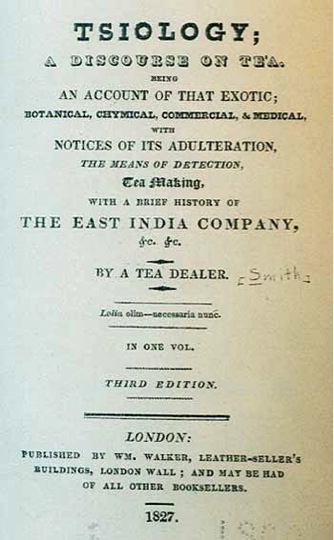 The word tsiology is a nineteenth century expression. Rare and obscure, tsiology was said to mean “a scientific dissertation on tea.”[1] As a term, tsiology was expressly coined in 1826 for a polemical account published that very year in London. In keeping with the expository style of titles of the time, the name of the book ran on at some length: Tsiology: A Discourse on Tea. Being an account of that exotic, botanical, chymical, commercial and medical, with notices of its adulteration, the means of its detection, Tea making, with a brief history of The East India Company, etc. The small, one volume book was written by an English author who anonymously and simply referred to himself as “A Tea Dealer.”[2] In addition to being an exposition on tea, Tsiology was a defense of the East India Company monopoly and a critique of not only escalating government tariffs but also of fraudulent schemes disrupting the domestic tea trade. Tsiology temporarily attracted London readers with its facade of scholarship, the book surviving three editions printed over a year or so.[3] While the book raised several important and timely issues about the British trade, the term tsiology never gained acceptance as an expression of tea, and indeed it all but vanished from literary as well as spoken English. Continue Reading →
The word tsiology is a nineteenth century expression. Rare and obscure, tsiology was said to mean “a scientific dissertation on tea.”[1] As a term, tsiology was expressly coined in 1826 for a polemical account published that very year in London. In keeping with the expository style of titles of the time, the name of the book ran on at some length: Tsiology: A Discourse on Tea. Being an account of that exotic, botanical, chymical, commercial and medical, with notices of its adulteration, the means of its detection, Tea making, with a brief history of The East India Company, etc. The small, one volume book was written by an English author who anonymously and simply referred to himself as “A Tea Dealer.”[2] In addition to being an exposition on tea, Tsiology was a defense of the East India Company monopoly and a critique of not only escalating government tariffs but also of fraudulent schemes disrupting the domestic tea trade. Tsiology temporarily attracted London readers with its facade of scholarship, the book surviving three editions printed over a year or so.[3] While the book raised several important and timely issues about the British trade, the term tsiology never gained acceptance as an expression of tea, and indeed it all but vanished from literary as well as spoken English. Continue Reading →
Wandering Immortal
Guo Pu of the Eastern Jin
Wandering Immortal
The bustling capital is a pitfall for wayward gentlemen.
The mountain forest is seclusion for hermits.
No need to exalt the vermillion gate;
It is incomparable to embracing Penglai,
Where right from the Source I ladle pure water,
Where from the hills and mountains I gather cinnabar mushrooms.
Spirit Stream conceals me well:
No need to climb the Ladder of Clouds.
Lacquer Garden had Chuangzi;
Master Lai, a reclusive wife.
Advancing ensures seeing the dragon but
Retiring is like a ram butting a fence.
On the high Path, I abandon the swirling dust,
Bidding farewell to Boyi and Shuqi.
Bring in the Wine
Li Bai of the Tang dynasty
Bring in the Wine
Have you not seen the Yellow River waters flowing from Heaven,
Rushing to the sea, never to return?
Have you not seen parents’ sorrow in their white hair?
Once, it was like black silk at dawn, now at sunset it’s like snow.
A life fulfilled must contain happiness:
Never let the golden vessel go empty, just add the moon!
Born with Heaven’s gifts, I must use them;
I’ve scattered thousands in gold and it all returns to me.
Boil the mutton, butcher the ox, all for joy!
Muster a draught of three hundred cups!
Elder Cen and Master Danqiu,
Bring in the wine, the ceaseless cups.
Just one more song for you,
Please just listen closely.
Bells and drums, delicacies and jade? All nothing!
I just want one long binge, not sobriety!
Old sages and worthies? All forgotten!
Only great drunks leave behind their names.
Prince Chen once feasted in the Temple of Tranquil Joy,
Worth tens of thousands, casks of wine indulged every pleasure.
So how dare I say my money is running out?
Go buy more wine and fill our cups.
My fine dappled horse, my precious furs,
Call over the servant boy, exchange them for rare wines.
Together we’ll wash away ten thousand old sorrows.
Excerpt from the Rhapsody on the Capital of Shu
Yang Xiong of the Han dynasty
Excerpt from the Rhapsody on the Capital of Shu
…Thus,
The Five Grains are abundant,
The squashes and gourds, aplenty, and
The many plants yield thatch and hemp.
Everywhere is ginger and gardenia,
Monkshood and great garlic,
Flowering shrubs and wormwood,
Pepper and riverweed.
The sundry gels, pastes, and sweet wines,
All gathered, presented, and stored.
In winter, the bamboo nurtures shoots
To accompany the daily dishes.
The Hundred Flowers burst forth in spring
Filling the air with gentle perfume.
Tendrils and tea, lushly profuse,
Jade green, russet, and celadon,
Glorious as luminous dragon scales,
Spread like rich embroidery and
Vast prospect without end…
Thomas Garway’s Broadsheet Advertisement for Tea, circa 1668
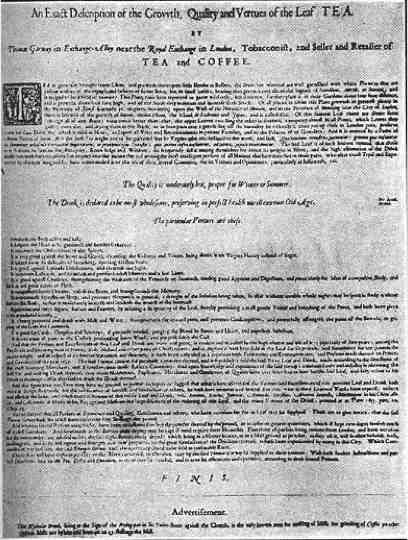 “An Exact Description of the Growth, Quality, and Vertues of the Leaf TEA, by Thomas Garway in Exchange Alley, near the Royal Exchange in London, Tobacconist, and Seller and Retailer of TEA and COFFEE.
“An Exact Description of the Growth, Quality, and Vertues of the Leaf TEA, by Thomas Garway in Exchange Alley, near the Royal Exchange in London, Tobacconist, and Seller and Retailer of TEA and COFFEE.
Tea is generally brought from China, and groweth there upon little Shrubs or Bushes, the Branches whereof are well garnished with white Flowers that are yellow within, of the bigness and fashion of sweet Brier, but smell unlike, bearing thin green leaves about the bigness of Scordium, Mirtle, or Sumack, and is judged to be a kind of Sumack: This Plant hath been reported to grow wild only, but doth not, for they plant it in their Gardens about four foot distance, and it groweth about four foot high, and of the Seeds they maintain and increase their Stock. Of all places in China this Plant groweth in greatest plenty in the Province of Xemsi, Latitude 36. degrees, bordering upon the West of the Province of Honam, and in the Province of Namking, near the City of Lucheu; there is likewise of the growth of Sinam, Cochin China, the Island de Ladrones and Japan, and is called Cha. Of this famous Leaf there are divers sorts (though all of one shape) some much better than the other, the upper Leaves excelling the other in fineness, a property almost in all Plants, which Leaves they gather every day, and drying them in the shade, or in Iron pans over a gentle fire till the humidity be exhausted, then put up close in Leaden pots, preserve them for their Drink Tea, which is used at Meals, and upon all Visits and Entertainments in private Families, and in the Palaces of Grandees. And it is averred by a Padre of Macao Native of Japan, that the best Tea ought not to be gathered but by Virgins who are destined to this work, and such, Qua nondum Menstrua patiuntur; gemma qua nascuntur in summitate arbuscula servantur Imperatorie, ac pracipuis ejus Dynastis: qua autem infra nascuntur, ad latera, populo conceduntur.[1] The said Leaf is of such known vertues, that those very Nations so famous for Antiquity, Knowledge, and Wisdom, do frequently sell it amongst themselves for twice its weight in Silver, and the high estimation of the Drink made therewith, hath occasioned an inquiry into the nature thereof among the most intelligent persons of all Nations that have travelled in those parts, who, after exact Tryal and Experience by all Wayes imaginable, have commended it to the use of their several Countries, for its Vertues and Operations, particularly as followeth, viz. Continue Reading →
Ascending the White Rabbit Pavilion in Chengdu
Zhang Zai of the Western Jin
Ascending the White Rabbit Pavilion in Chengdu
Corners bind the city’s inner walls,
Wing swept eaves mount storied pagodas.
Rooftops pierce the heavenly clouds,
Tall spires ascend into the Void.
High pavilion, the open crimson door:
The view, an unbroken panorama.
To the west, the river Min and mountain ridges:
Lofty Mount E looms larger than the peaks of Jing and Wu.
Great taro patches cover the land,
Plains and marshes grow grains and greens.
Even when compared to the time of Yao and Tang,
Food is ever abundant.
In myriad small towns,
Crowd the common folk.
The streets, confused, a tangle of fine silk threads;
Roofs and rafters invade the boulevards.
I wish to ask about Master Yang’s abode
And to see the home of the Elder Minister.
Cheng and Zhuo piled up thousands in gold,
As proud and prodigal as the Five Marquises.
They ride marvelous mounts and
Wear jade belts and swords from Wu.
Their bronzes filled with foods of the Four Seasons,
Blending aromas, wonderful and rare.
But truly, I’d rather be in the woods picking autumn oranges
And on the nearby rivers angling for spring fish:
Black fry tastier than fish sauce,
Fruit more luscious than crab dip.
Fragrant, beautiful tea crowns the Six Purities,
Its overflowing flavor spreads through the Nine Regions.
If only life were that peaceful,
This world would hold more pleasure.
The Accomplished Man
Zuo Si of the Jin dynasty
Poem Eight from Eight Poems on History
Flap, flap, a caged bird
Beating wings against four corners.
Aloof, aloof, the backstreet scholar,
A brooding shadow kept to an empty house.
Going out, there is no exit,
Brambles block the way.
Dreams are abandoned,
Like fish out of water.
On the street – no measure of fortune;
At home – not a measure saved.
Constantly belittled by relations,
Day and night neglected by friends.
Su Qin propagandized in the north and
Li Si memorialized in the west, but
Aspiring to glory and splendor, tsk,
Is just carving rotten wood.
Drinking from the river fills the belly,
But one can drink only so much.
A forest nest need perch but on a single branch:
Such is the way of the accomplished man.

